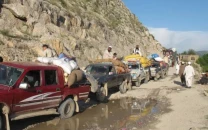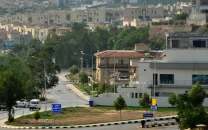'Wealthy nations must step up climate funding'
.

Deadly heat waves, catastrophic floods and vanishing glaciers threaten millions of lives and livelihoods, making Pakistan one of the most vulnerable nations.
The country faces a climate emergency despite being an emitter of less than one per cent of global greenhouse emissions. "We are in a fight for survival," said Saleem Shaikh, a spokesperson for Ministry of Climate Change and Environmental Coordination. "But we are not to surrender to despair. Our initiatives aim to protect our people and set an example for the world."
"We suffered massive losses in recent years but still stand firm in the fight against this calamity," he said referring to the 2022 monsoon rains and glacial melting that had submerged one third of Pakistan, killing 1,760 people, displacing 33 million and destroying two million homes. Economic losses had hit US$40 billion.
Just two years later, in June 2024, temperature in Southern Pakistan spiked to 49°C (120°F), killing 568 people and leading to the hospitalisation of 7,900 as power failures crippled cooling systems, deepening the crisis. "Families saw their homes demolished.





















COMMENTS
Comments are moderated and generally will be posted if they are on-topic and not abusive.
For more information, please see our Comments FAQ